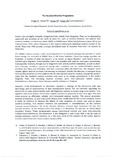- ALSA Home
- →
- Documents
- →
- Research Events
- →
- View Item
JavaScript is disabled for your browser. Some features of this site may not work without it.
| dc.contributor.author | Kruger, H. | |
| dc.contributor.author | Stoker, P.H. | |
| dc.contributor.author | Kruger, P.P. | |
| dc.contributor.author | Kruger, H.G. | |
| dc.contributor.author | Diedericks, C. | |
| dc.coverage.spatial | Antarctica | |
| dc.date.accessioned | 2021-03-10T14:47:01Z | |
| dc.date.available | 2021-03-10T14:47:01Z | |
| dc.date.created | 2016/07/27 | |
| dc.date.issued | 2016/07/27 | |
| dc.identifier.uri | http://hdl.handle.net/123456789/28618 | |
| dc.description.abstract | Cosmic rays are highly energetic charged particles, mainly from the galaxy. They can be detected by spacecraft and recorded on the earth by detectors, such as neutron monitors. We operate four neutron monitors: at Hermanus (since 1957), at SANAE (since 1964), Potchefstroom (since 1971) and Tsumeb (since 1976), where Hermanus is the longest continuously operating neutron monitor in the world. These four NMs provide a unique latitudinal chain of recorders from near the equator to Antarctica. The SANAE neutron monitor is the most important in the network because the particles of much lower energy are recorded at SANAE than at the lower latitudes. These low energy particles are important in studies of what has become to be known as Space Weather. Earth bound neutron monitors give long-term stable baseline that is not possible with satellites and space experiments. Consequently, intensity changes due to long-term solar activity (called modulation), as well as short term intensity variations caused by strong solar eruptions, can be studied. Standard neutron monitors are heavy and immobile, and have unmaintainable old electronics. We designed much smaller, lighter neutron monitors that are easy to transport. Initially the idea was to transport these mini-neutron monitors to inter-calibrate the 50 odd standard neutron monitors around the world in order that the standard neutron monitors may serve as an energy spectrometer in the earth's magnetic field. The following neutron monitors were inter-calibrated: SANAE (twice), Potchefstroom, Hermanus, Kiel in Germany and Doi lnthanon in Thailand. However, rapid developments in electronics required a redesign of the electronics with new technology and an improvement of data management system. We are currently upgrading the electronics for easy maintainability with self-diagnostic systems to ensure long-term stability. This, together with other factors, led to mini neutron monitors as detectors in their own right. This new vision ensures an affordable, reliable, and transparent neutron monitor. This second generation network of detectors, at sites that can be chosen more readily than for the current network, makes it easier to continue to observe the effects of solar eruptions on cosmic rays and on space weather. Currently, mini neutron monitors are operational in Potchefstroom, on the German research vessel Polarstern [1], at the German Antarctic research base Neumayer [1], two mini neutron monitors at the French-Italian base Dome C in Antarctica [2] and one on Sierra Negra mountain, Mexico. These developments causes international interest and closer internationally collaboration. Furthermore, the electronics is also designed in such a way that it can be used on existing stationary neutron monitors. As a test case, some of the counters of the SANAE neutron monitors were fitted with these heads in January 2014. | en_ZA |
| dc.description.sponsorship | Sponsored by the the Department of Science and Innovation(DSI) through National Research Foundation (NRF) - South Africa | en_ZA |
| dc.description.statementofresponsibility | Antarctic Legacy of South Africa | en_ZA |
| dc.format | en_ZA | |
| dc.language | English | en_ZA |
| dc.publisher | South African National Antarctic Programme (SANAP) | en_ZA |
| dc.relation | SANAP Symposium 2016 | en_ZA |
| dc.rights | Copyright | en_ZA |
| dc.subject | Research | en_ZA |
| dc.subject | Science | en_ZA |
| dc.subject | Meetings | en_ZA |
| dc.subject | Symposium | en_ZA |
| dc.subject | SANAP Symposium 2016 | en_ZA |
| dc.subject | Antarctica | en_ZA |
| dc.subject | Earth Systems | en_ZA |
| dc.subject | Research | en_ZA |
| dc.subject | Space/earth science | en_ZA |
| dc.subject | Neutron Monitors | en_ZA |
| dc.subject | Cosmic Rays | en_ZA |
| dc.title | The Neutron Monitor Programme | en_ZA |
| dc.type | Poster_Abstracts | en_ZA |
| dc.rights.holder | Antarctic Legacy of South Africa | en_ZA |
| dc.rights.holder | Kruger, H. | en_ZA |
| dc.rights.holder | Stoker, P.H. | en_ZA |
| dc.rights.holder | Kruger, P.P. | en_ZA |
| dc.rights.holder | Kruger, H.G. | en_ZA |
| dc.rights.holder | Diedericks, C. | en_ZA |
| iso19115.mdconstraints.uselimitation | This item and the content of this website are subject to copyright protection. Reproduction of the content, or any part of it, other than for research, academic or non-commercial use is prohibited without prior consent from the copyright holder. | en_ZA |
| iso19115.mddistributor.distributorcontact | South African National Antarctic Programme (SANAP) | en_ZA |
| iso19115.mdformat.name | en_ZA | |
| iso19115.mdidentification.deliverypoint | Antarctic Legacy of South Africa, Faculty of Science, Private Bag X1, Matieland. Stellenbosch. South Africa. | en_ZA |
| iso19115.mdidentification.electronicmailaddress | antarcticlegacy@sun.ac.za | en_ZA |
| iso19115.mdidentification.organizationname | North-West University | en_ZA |
Files in this item
This item appears in the following Collection(s)
-
Research Events [502]
Material directly related to official scientific and research events

